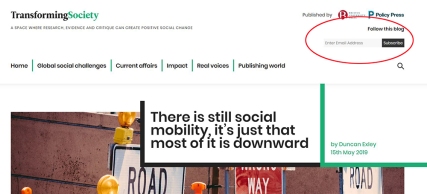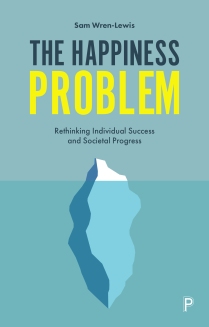
Did you know that, contrary to public belief, in the UK a life sentence does last for life? And that capital punishment in the UK was abolished for murder in 1965 but the Death Penalty was a legally defined punishment as late as 1998?
50 Facts Everyone Should Know About Crime and Punishment in Britain, written by leading experts, presents 50 key facts related to crime and criminal justice policy in Britain.
The editors James Treadwell and Adam Lynes talk about the inception of the book and what inspired them to write it in this excerpt from the introduction:
“Upon embarking on this journey of compiling facts about crime-related matters from contemporary issues in prisons to crime and its victims, a quote from one of the earliest pioneers in academic populism, Carl Sagan came to mind:
We wish to find the truth, no matter where it lies. But to find the truth we need imagination and skepticism both. We will not be afraid to speculate, but we will be careful to distinguish speculation from fact. (Carl Sagan (1980) Cosmos: a Personal Voyage, Episode 1).
Clearly, Sagan was framing this eloquent statement around the scientific pursuit for knowledge about the Universe and our place within it, and not about crime per se. This book is indeed focused on the topic of crime and criminal justice, yet Sagan’s words provide an important reminder that this assortment of ‘facts’ consists of countless voices – each trying to influence and shape how we perceive crime, criminals and its victims, while attempting not to drown and be silenced by all the others.
‘Facts’ can be myth busting or truth revealing. The term ‘fact’ can, of course, have different meanings in different contexts: a fact may sometimes have been presented as an absolute fact (a truth that is uncontested) or as a relative fact, and yet, what constitutes the parameters of truth or fact can be contested in all realms. The language of criminology and academia necessarily often deals in caveats, where estimates, approximates, averages and suggestions are cautiously preferred to grand and sweeping claims that might be proven falsehoods.
Crime is also an emotive subject, where values, morals, ethics, beliefs, views and opinions sit alongside fact. What constitutes a fact in criminology is rightly often contested. Hence we have used the term ‘facts’ here not to introduce the readers to absolute or uncontested topics, but rather to attempt to frame a broad discussion that involves 50 academics, some well established, some earlier in their careers, writing accessibly on issues on which they are knowledgeable.
The text is in many ways a provocation. It was conceived as an attempt to give readers an accessible introduction to the topics of crime and punishment in Britain today. What appears here are several discussions around crime and the criminal justice system, where the term ‘fact’ is broadly used to take accepted wisdom and then discuss that critically in a bid to get readers to think more deeply about issues. Yet how to structure this is, in and of itself, not unproblematic.
The Ministry of Justice is a ministerial department of the British government, and while historically people may have asserted that ‘British justice is the finest in the world’, the organisation of England and Wales, Scotland and Northern Ireland into separate legal systems already means that to talk of crime in Britain is problematic. That does not stop the term being used. For example, Former Lord Chancellor Charles Falconer lamented in February 2018 in the Guardian that ‘British justice is in flames. The MoJ’s fiddling is criminal’ (Falconer, 2018).
Yet perhaps our first fact ought to be that British justice is problematic.
We have attempted to be accurate, presenting material so as to be clear, but the spirit of this text is one that encourages critical engagement, and to encourage the reader not to simply accept at face value what is claimed as fact. In particular, the social sciences are often presented as dealing with facts, when in reality they are a framework for interpreting, systemising and predicting future outcomes based on empirical observations…
What we do know is that, in basing the contributions here on research and data, the 50 contributing authors present facts that will give the reader a better knowledge of the contemporary place of crime and control in Britain. It will better equip you reader with imagination and scepticism, and a basic knowledge that will aid you to appraise and critically evaluate the claims you hear being made about crime. We hope you enjoy it.”
 50 Facts Everyone Should Know about Crime and Punishment in Britain, edited by James Treadwell and Adam Lynes is available on the Bristol University Press website. Order here for £10.39.
50 Facts Everyone Should Know about Crime and Punishment in Britain, edited by James Treadwell and Adam Lynes is available on the Bristol University Press website. Order here for £10.39.
Find out more about impact, influence and engagement at Policy Press here.
Policy Press newsletter subscribers receive a 35% discount – sign up here. Please note that only one discount code can be used at a time.
The views and opinions expressed on this blog site are solely those of the original blog post authors and other contributors. These views and opinions do not necessarily represent those of the Policy Press and/or any/all contributors to this site.








 50 Facts Everyone Should Know about Crime and Punishment in Britain
50 Facts Everyone Should Know about Crime and Punishment in Britain
![Grassroots youth work [FC] 4web](https://policypress.files.wordpress.com/2019/03/grassroots-youth-work-fc-4web.jpg?w=210&h=315) Grassroots Youth Work
Grassroots Youth Work  The Happiness Problem
The Happiness Problem
![The harms of work [FC]](https://policypress.files.wordpress.com/2019/02/the-harms-of-work-fc.jpg?w=209&h=314) The Harms of Work
The Harms of Work 
![Womens work [FC]](https://policypress.files.wordpress.com/2019/03/womens-work-fc.jpg?w=237&h=356) Women’s Work
Women’s Work